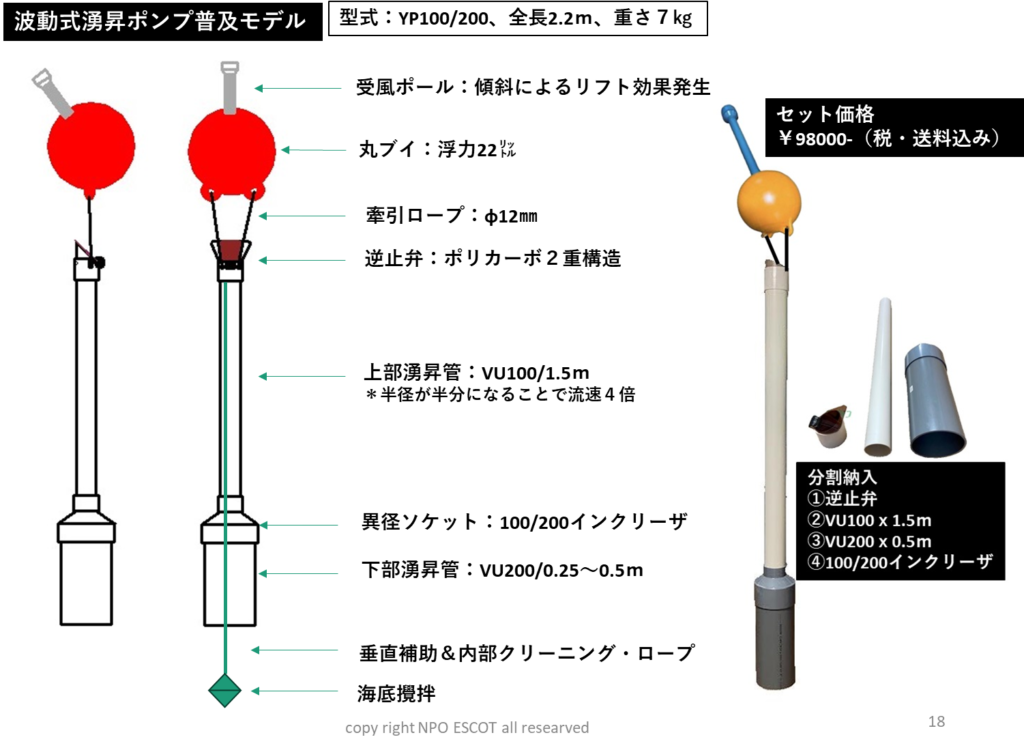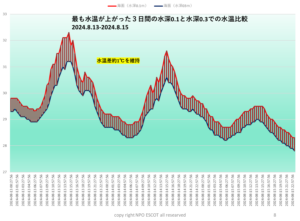The high temperature water cover 5-10cm above the ocean surface is the cause of the inhibition of oxygen and CO2 intake.
It became clear for the first time that ocean temperatures are noticeably rising just a few centimeters below the surface.
Furthermore, it was also discovered that there is a low-temperature water layer 2 to 3 degrees Celsius below the surface 2 meters below the surface.
It is believed that these hot water covers are a source of water vapor, which is contributing to the intensification of typhoons and heavy rains, the decline in the amount of dissolved oxygen and CO2 in the ocean, and the insufficient circulation of nutrients.
1. Measurement
: A temperature logger is attached directly under a lightweight float with high thermal insulation that blocks direct sunlight, and water temperature is measured at 30-minute intervals.
Location: Iwawada Fishing Port, Onjuku Town, Isumi County

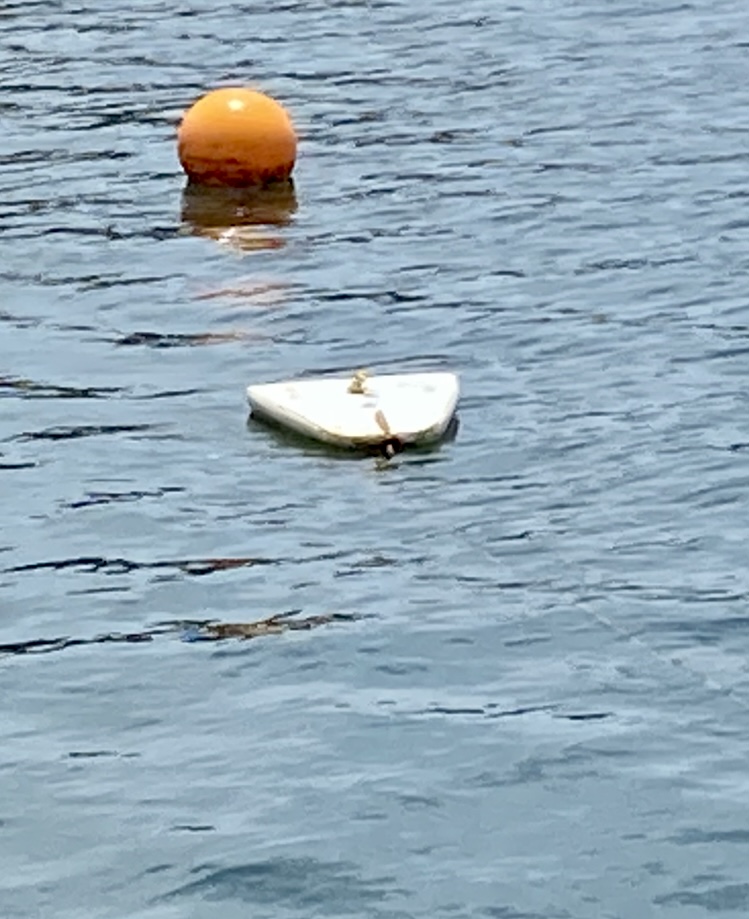
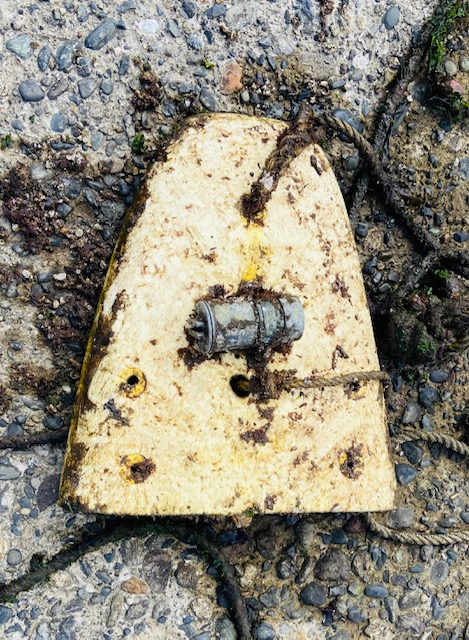
2. Comparison of water temperature at a depth of 0.1m and 2m
In August, the water temperature was recorded at 32°C, about 2°C higher than last year.
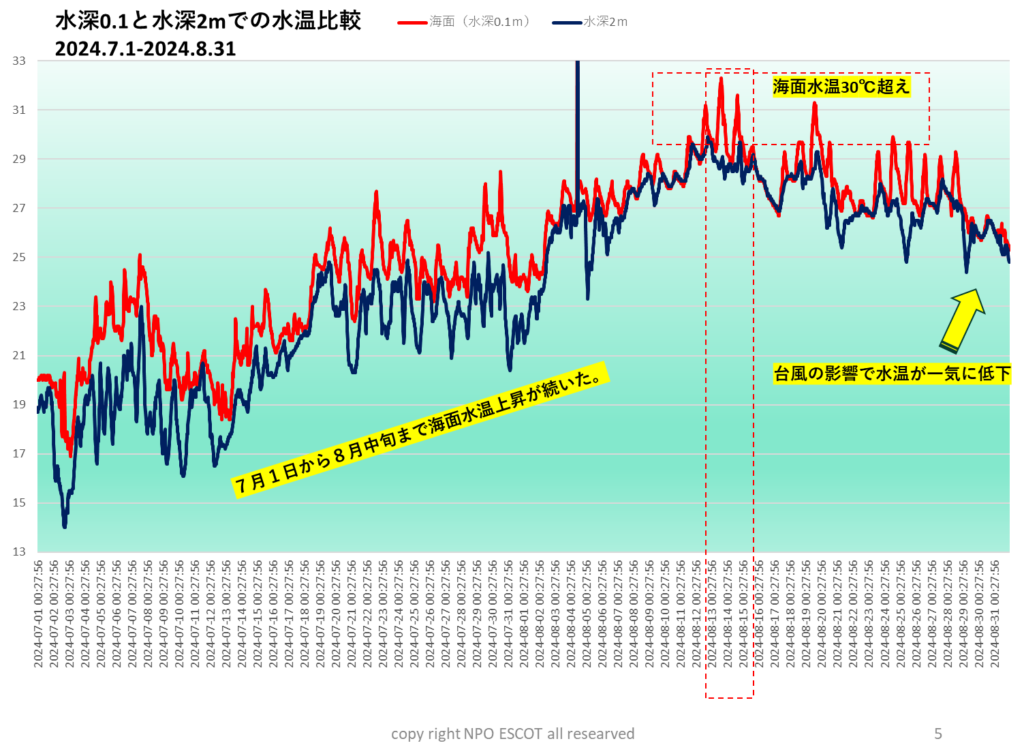
3. During the day in summer, the water temperature difference is 3°C or more at a depth of 2m.
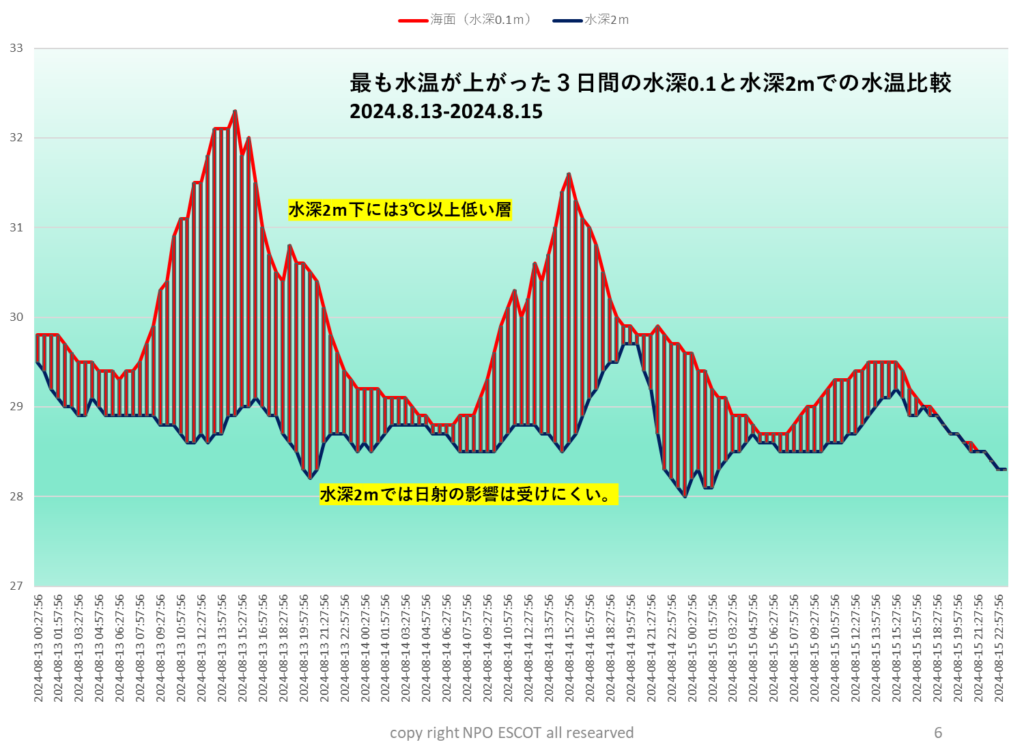
4. Comparison of water temperatures at depths of 0.1m and 0.3m. Sea surface temperature > low water temperature
at all times . A hot water lid exists on the sea surface for two months.
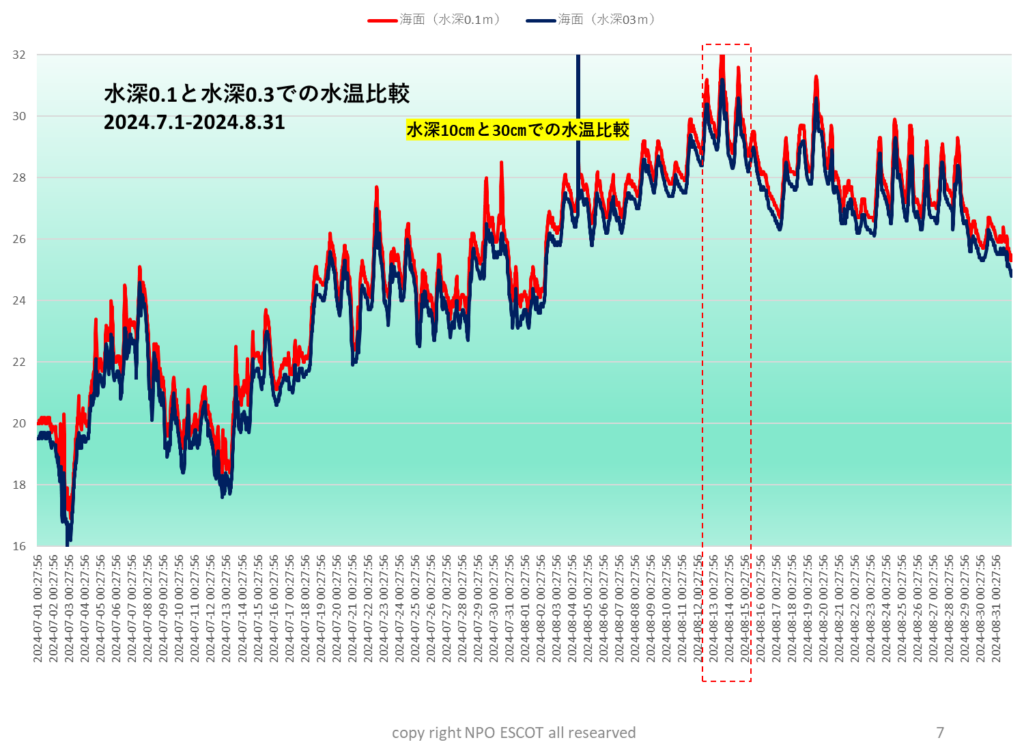
5. A high-temperature lid with stripes spreading across the ocean surface
maintains a temperature difference of about 1°C between depths of 10cm and 20cm.

Reference material: Dissolved oxygen, CO2 and water temperature curves
If the sea surface temperature drops, more CO2 will be absorbed, which may result in phytoplankton promoting the growth of seaweed.
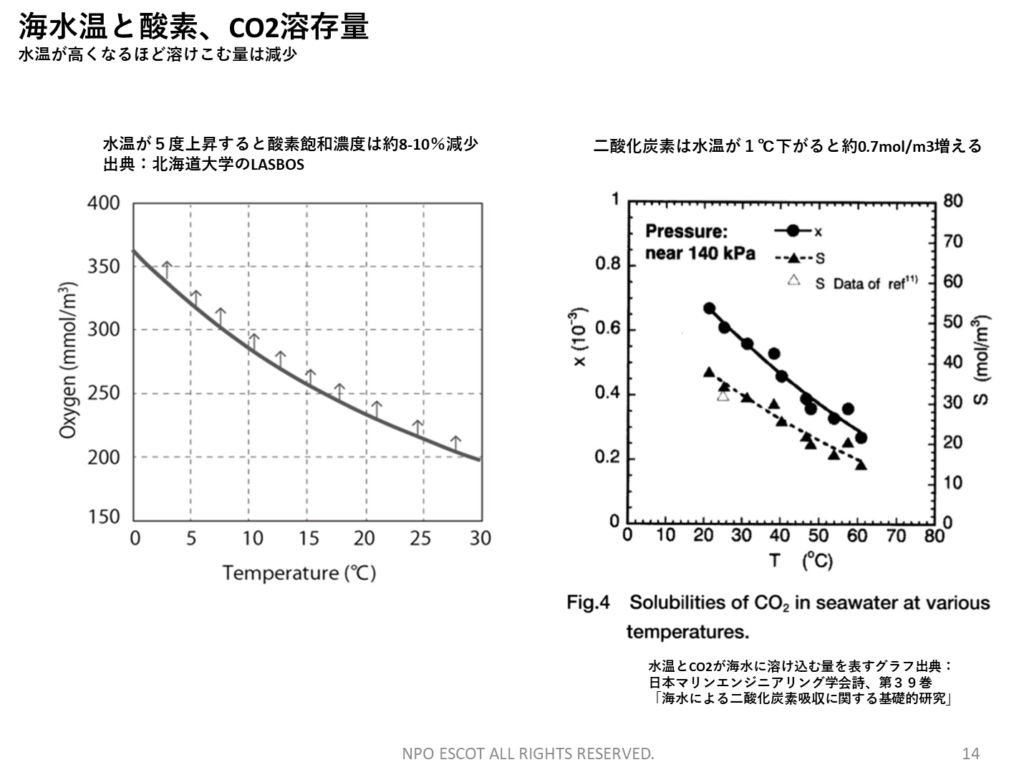
6. Water temperature change by depth
During the day when temperatures rise, about 1/3 of the heat is absorbed between 0.1m and 0.3m deep.
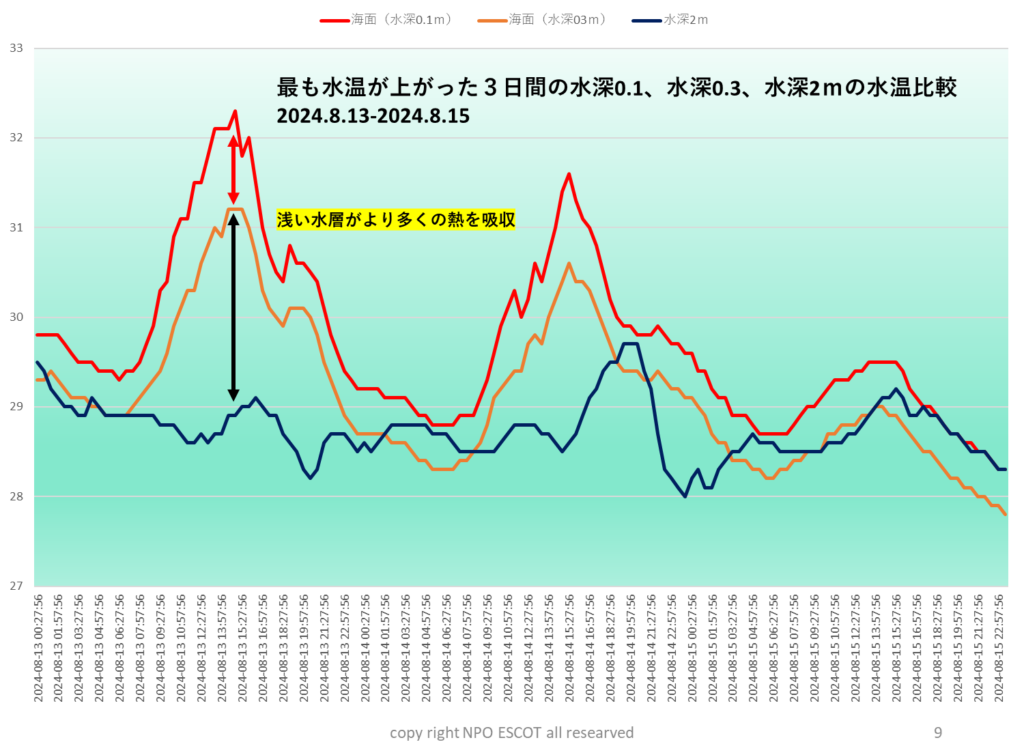
7. Cause of high temperature lid
Heat ray absorption characteristic of 3μm or more = If the thickness of water is 1mm, all light energy is absorbed
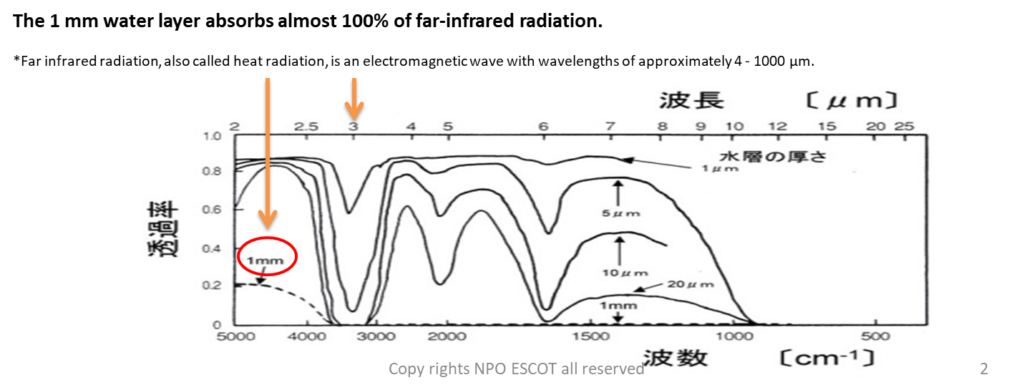
8. Proposal: Pumping up cold water several degrees colder from the bottom layer and removing the high temperature cap
will improve the absorption of oxygen and CO2, and promote the circulation of nutrients that have settled in the bottom layer by vertically stirring the seawater.

Reference: Sea surface temperature cooling effect of wave upwelling pump
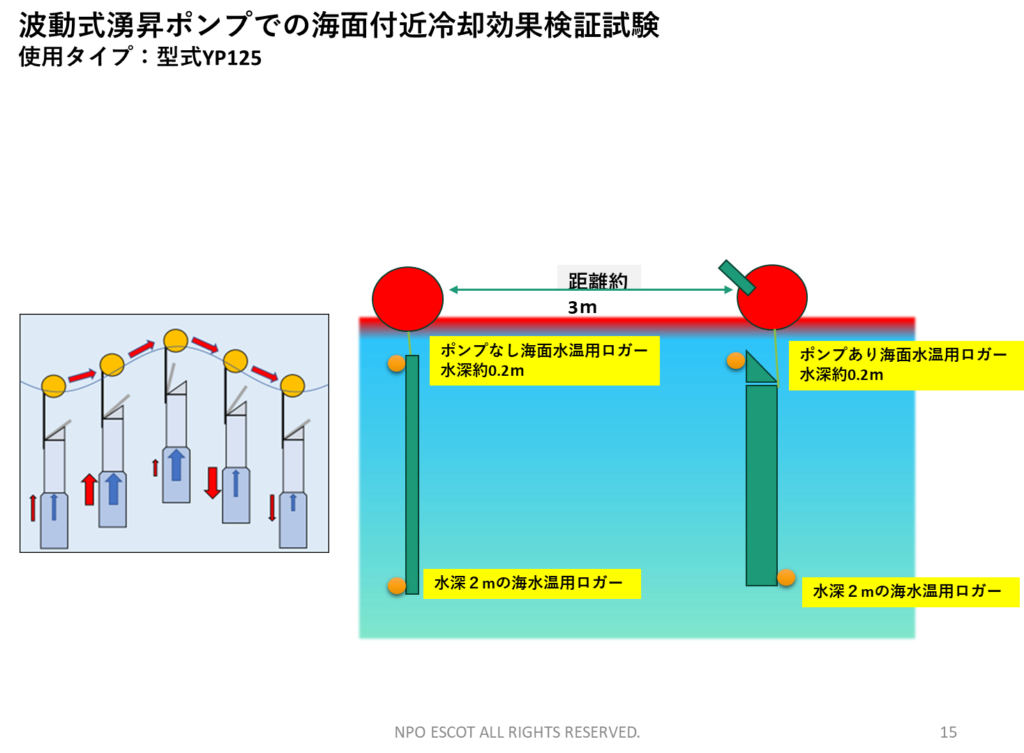
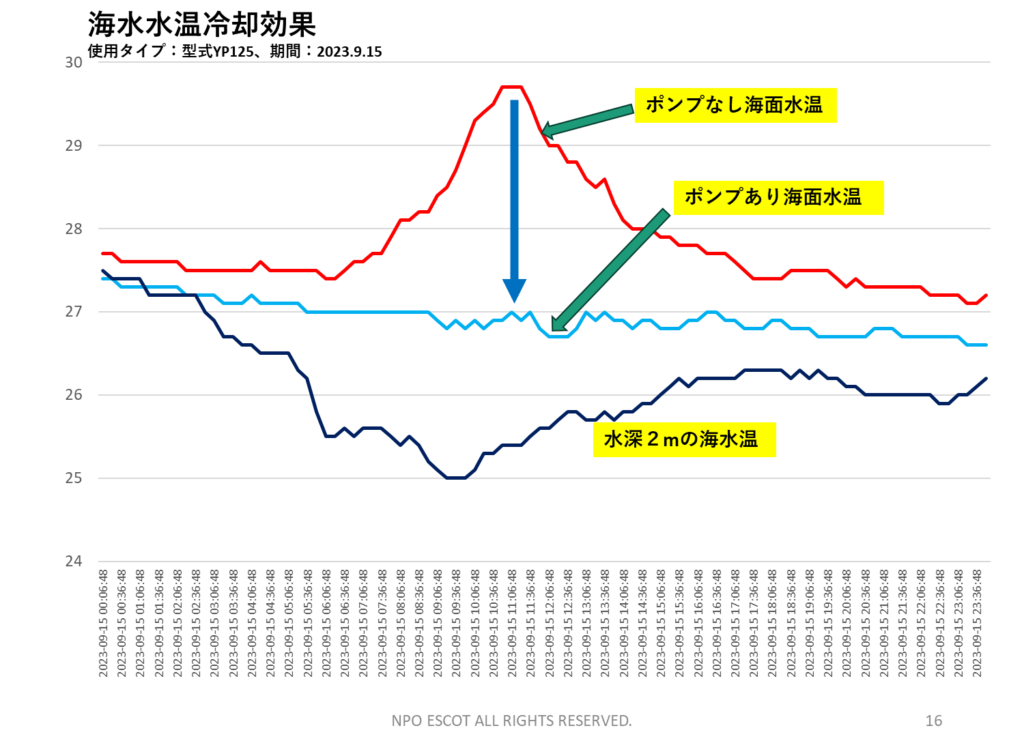
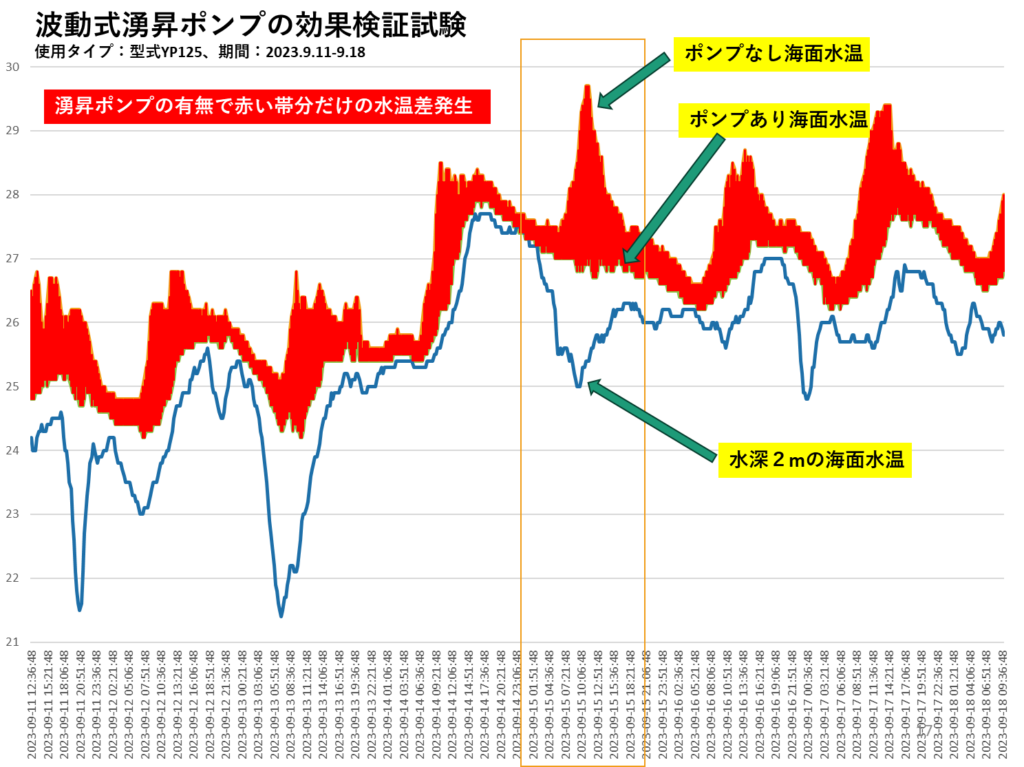
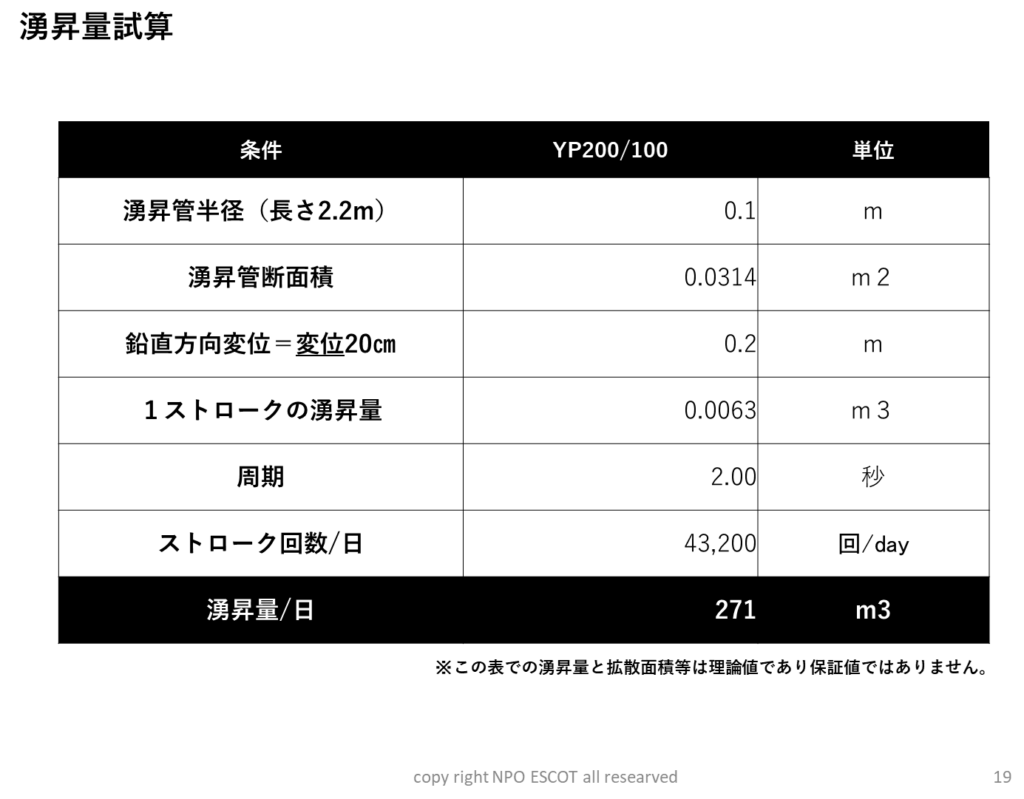
Reference: Air and water temperature comparison
Land temperature: Depth 0.1m: Depth 0.3m: Depth 2.0m
2024.07.01-2024.08.31
Measurement data
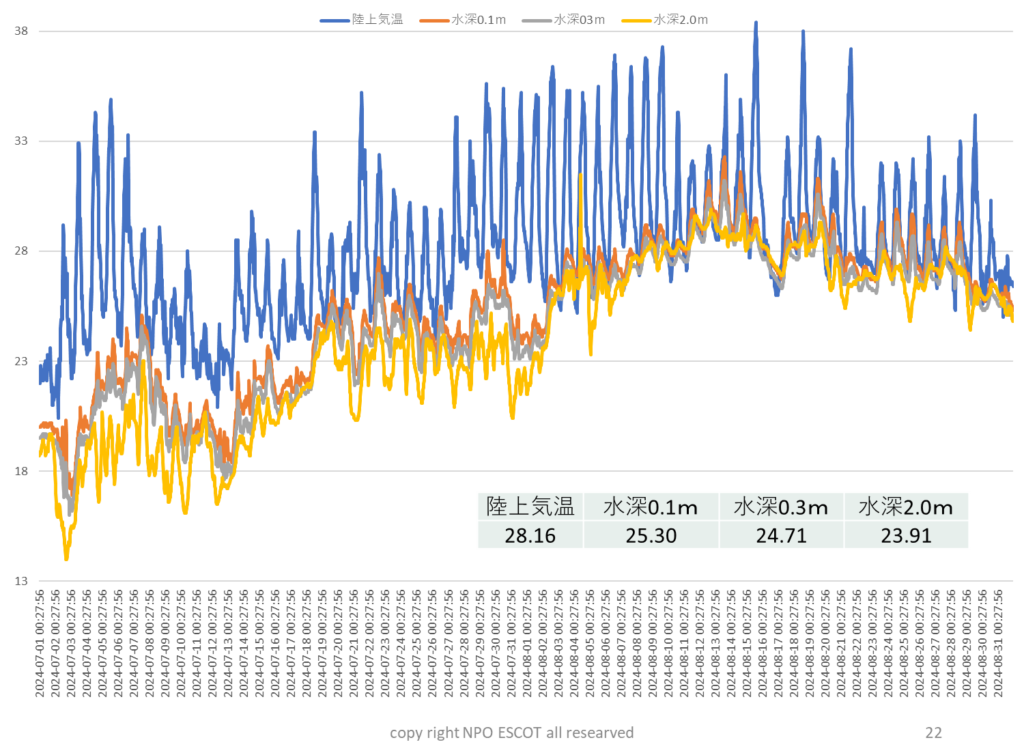
Land temperature: Depth 0.1m: Depth 0.3m: Depth 2.0m
2024.07.01-07.31
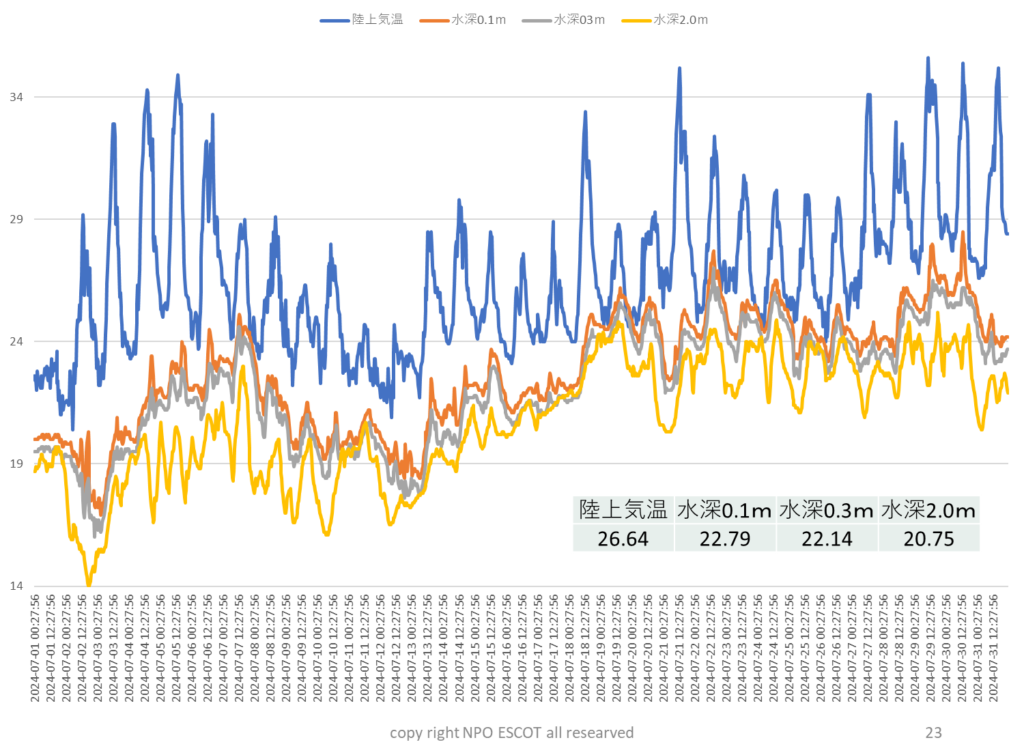
Land temperature: Depth 0.1m
2024.07.01-07.31
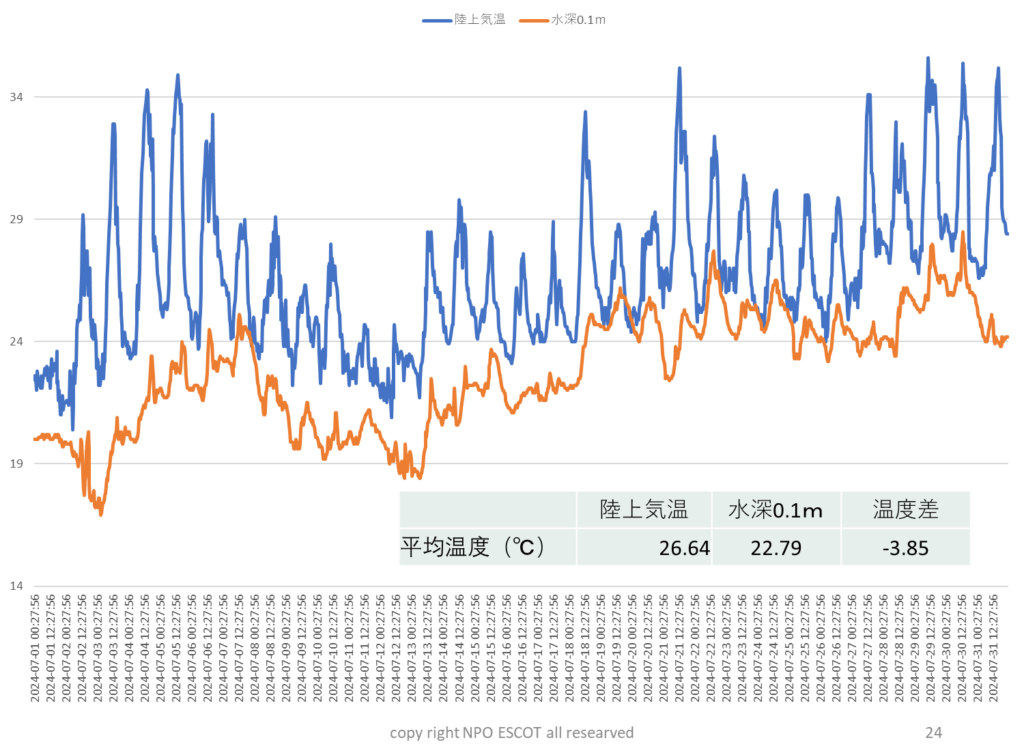
Depth 0.1m: Depth 2.0m
2024.07.01-07.31
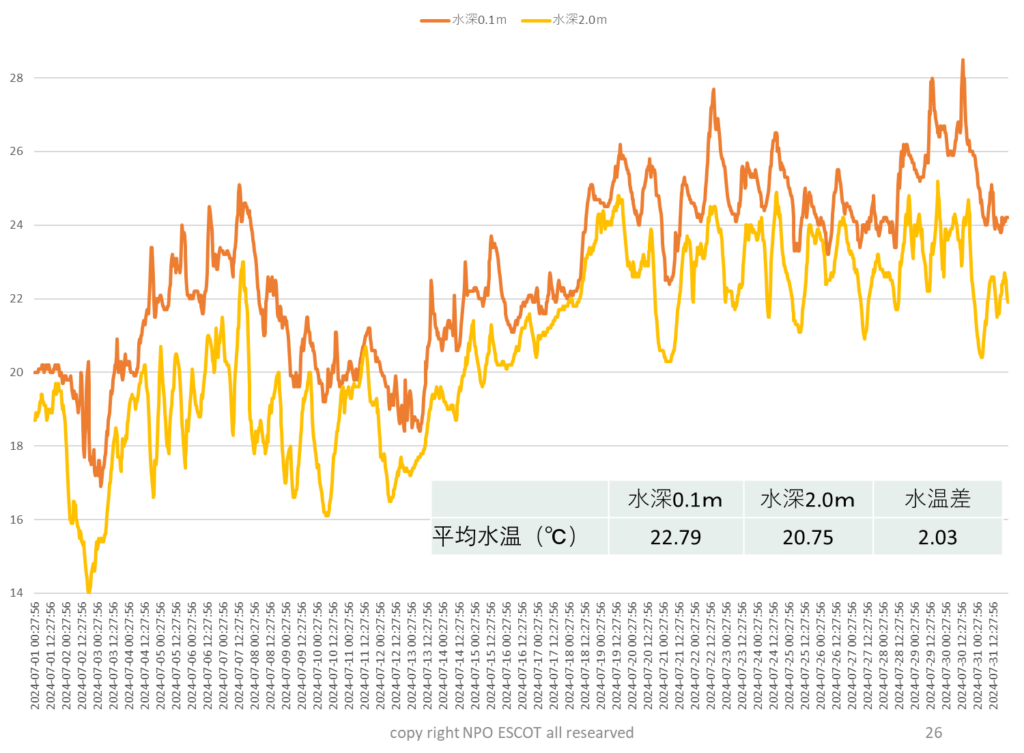
Depth 0.1m: Depth 0.3m
2024.07.01-07.31
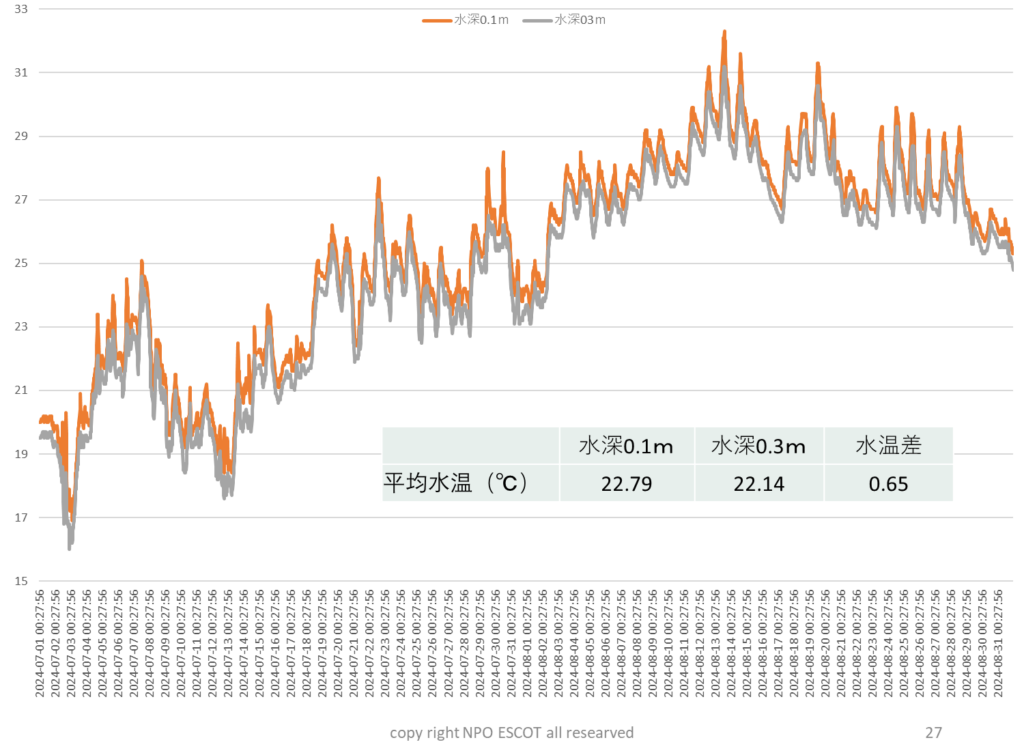
Water depth 0.1m: Water depth 0.3m: Water depth 2.0m
2024.07.01-07.31
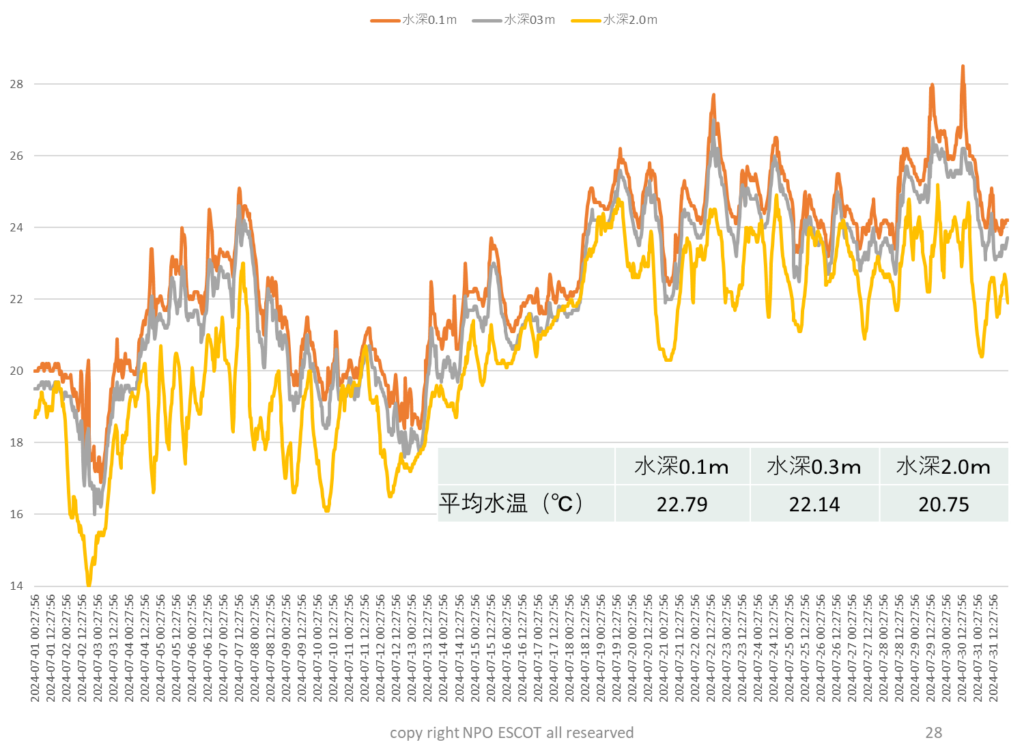
9. Test sales of portable upwelling pumps commenced.
A wave-type upwelling pump that is made up entirely of general-purpose parts except for the check valve.
